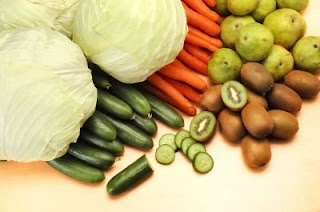Tips and Tricks-Good Eating Habits Part 2
This post may contain affiliate links. Please read my Disclosure and Privacy Policy.
 Last week I posted about Lucian’s sometimes strange eating habits. I read up on toddler eating habits and found a great article at Kids Health with these wonderful tips. To read in more detail click here.
Last week I posted about Lucian’s sometimes strange eating habits. I read up on toddler eating habits and found a great article at Kids Health with these wonderful tips. To read in more detail click here.
Toddlers are learning to navigate their world, communicate, and exert control over aspects of their lives. They don’t actually have control over much, but eating is one of the first areas they will master. By anticipating problems and offering choices, parents teach kids which behaviors will yield positive results and which ones won’t.
Most Toddlers Are Picky Eaters -Many toddlers express their budding independence through eating — or not eating, as the case may be. So nearly all toddlers could be described as picky eaters. Does your toddler want to eat only macaroni and cheese? You choose the foods on your toddler’s plate — and you don’t have to serve macaroni and cheese daily. If you do, you miss an opportunity to introduce new foods and increase the number of those your child is willing to eat. Most “food jags,” as they’re sometimes called, won’t last long if parents don’t accommodate them. Kids won’t starve and they will learn to be more flexible. Present a variety of healthy foods — including established favorites and some new foods — to make up the menu.
Serve right-sized portions. Parents often overestimate how much food a child should eat. Small portions are less overwhelming, while bigger portions may encourage overeating.
Don’t negotiate. It’s fine to encourage kids to “try one bite” but don’t fall into the negotiating trap.
Have family meals together. Kids eat a more nutritious diet, with more fruits and vegetables, when they regularly have family meals.
Create positive peer pressure. Toddlers are more likely to eat fruits and vegetables if they see their peers eating them, so look for opportunities where they can eat healthy with friends.
Let Kids Feed Themselves- Kids should start finger feeding around 9 months of age and try using utensils by 15-18 months. They need to decide whether to eat, what they will eat, and how much to eat — this is how they learn to recognize the internal cues that tell them when they’re hungry and when they’re full. Just as important, toddlers need to learn and practice the mechanics of feeding themselves.
Listen to Your Child- Be alert to what toddlers say through their actions. A child who is building a tower of crackers or dropping carrots on the floor may be telling you he or she is full. Pushing food on a child who’s not hungry may dull the internal cues that help kids know when they’ve eaten enough.
What If Kids Skip a Meal? Many toddlers need to eat often — as much as six times a day, including three meals and two or three snacks. Keep this in mind as you establish a pattern of meal and snacks. But realize that a food schedule only sets the times that you will present food to your toddler. Your child may not take every opportunity to eat. Kids should be allowed to respond to their own hunger cues, a vital skill when it comes to maintaining a healthy weight. Establish times for meals and snacks and try to stick to them. A child who skips a meal finds it reassuring to know when to expect the next one.
Avoid the Junk Food Trap-Toddlers need to eat healthy to get the nutrients their growing bodies need. Candy, potato chips, and other low-nutrient “junk foods” shouldn’t be part of their diet because they can crowd out the healthy foods needed. Also, food preferences are established early in life, so don’t miss opportunities to help your toddler develop a taste for nutritious foods.If your toddler asks for candy, simply say, “We don’t have any candy.” Then present two healthy snack alternatives to choose from. Even a child who mourns the lack of candy will still enjoy the sense of control from deciding which healthy snack to eat.
I really enjoyed reading these tips and was pleasantly surprised that for the most part we follow these rules. I hope these help you out and ease your mind when your child skips a meal. Next week I’ll post Part 3 on my own personal tricks I’ve used to get my son to eat healthier!
